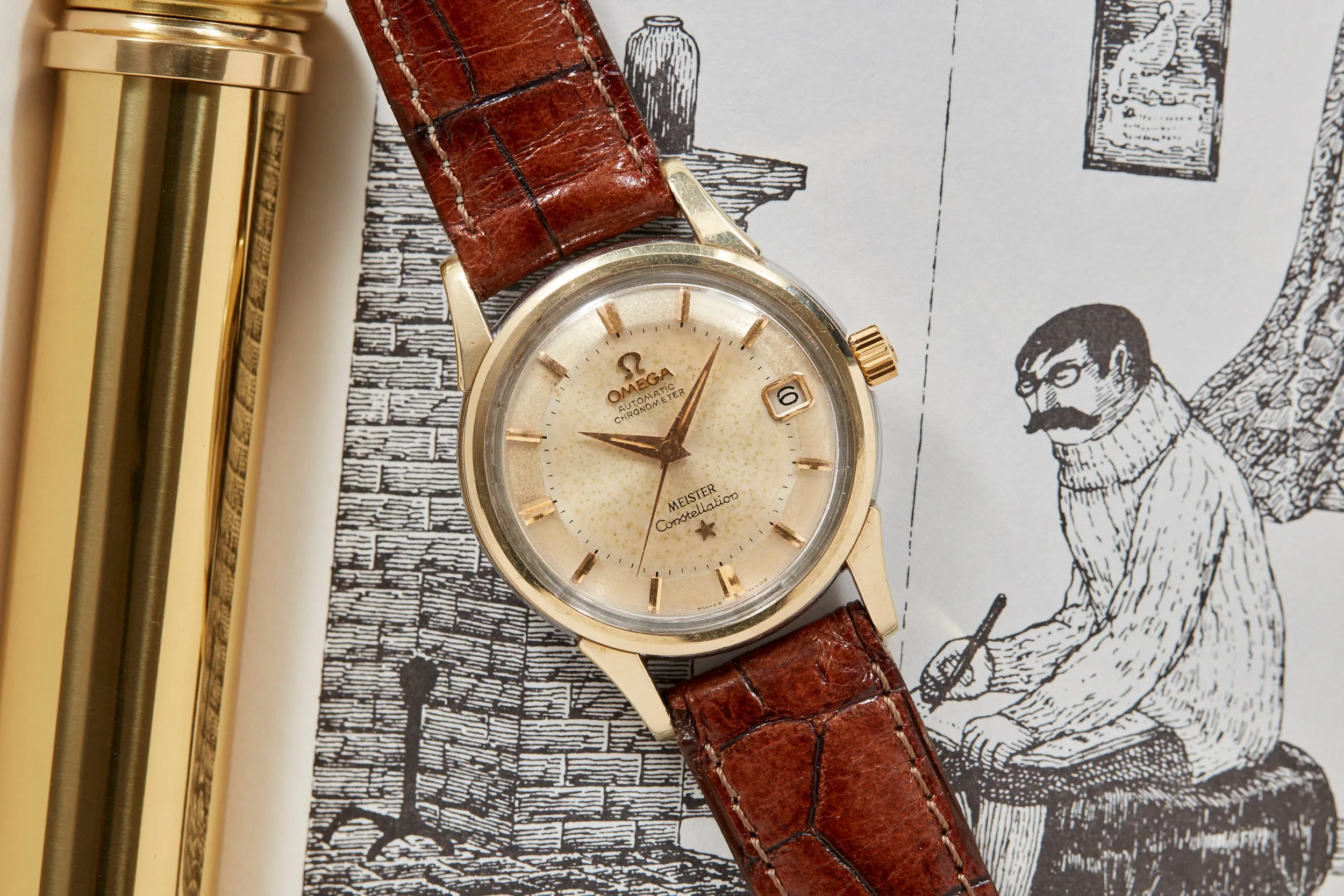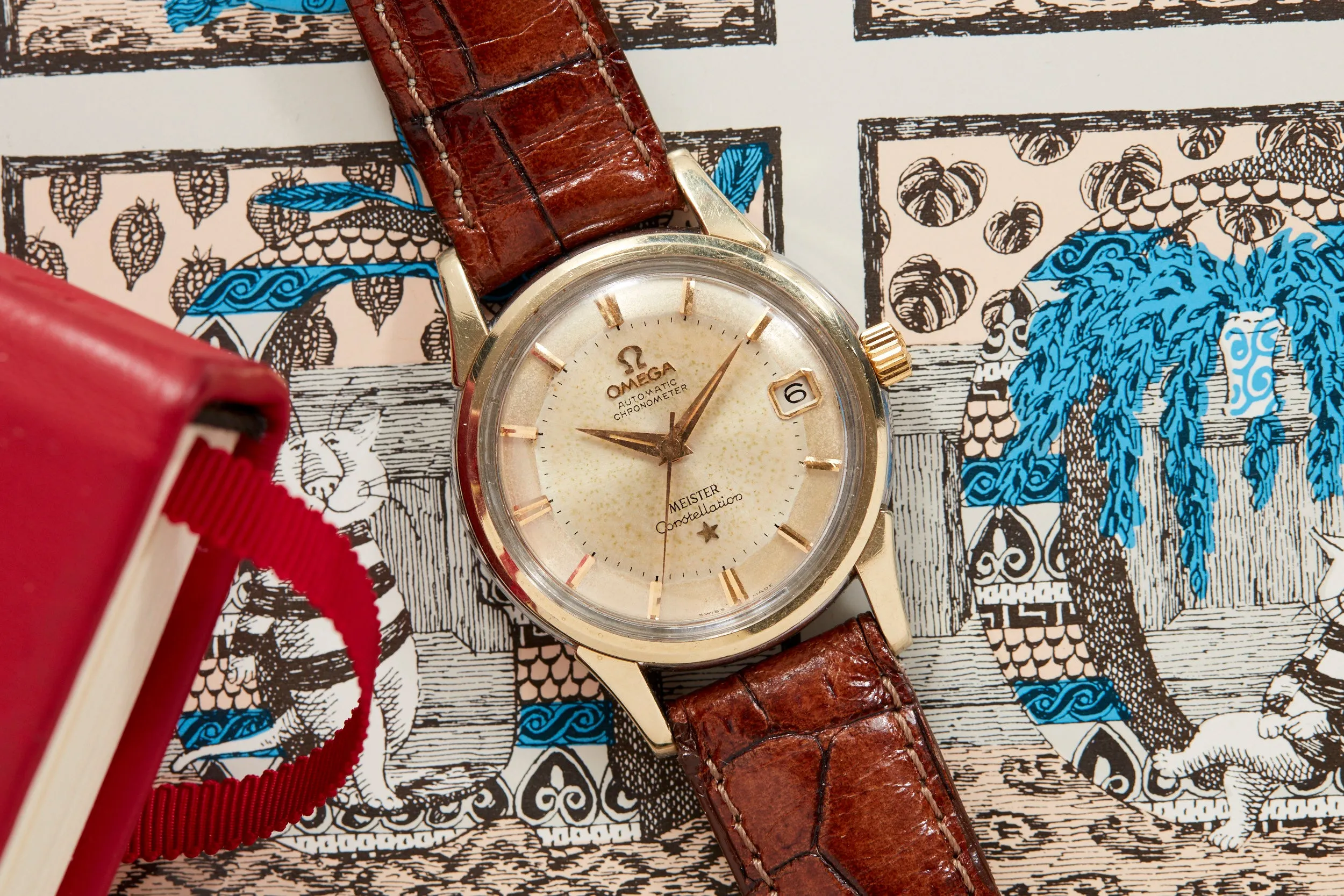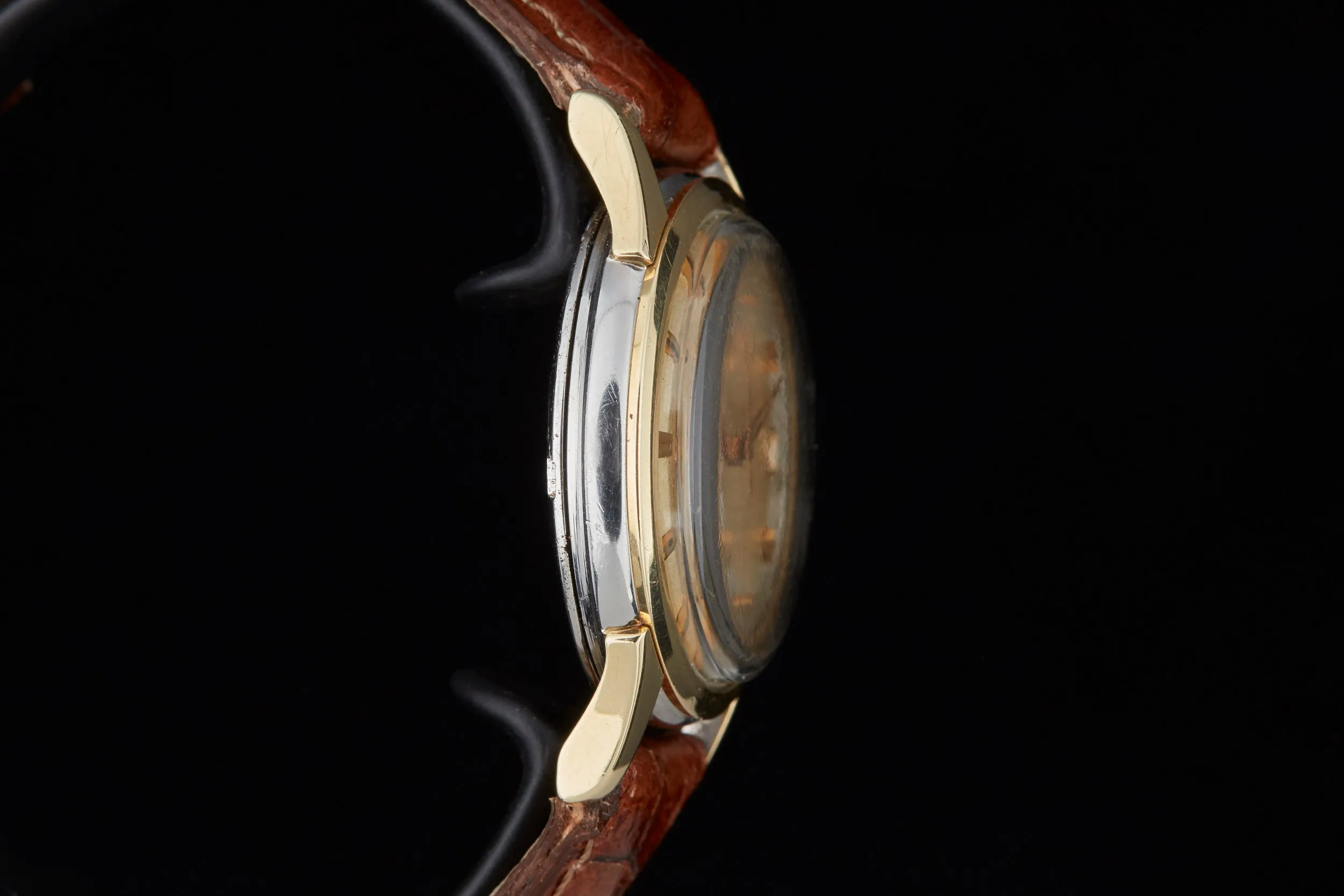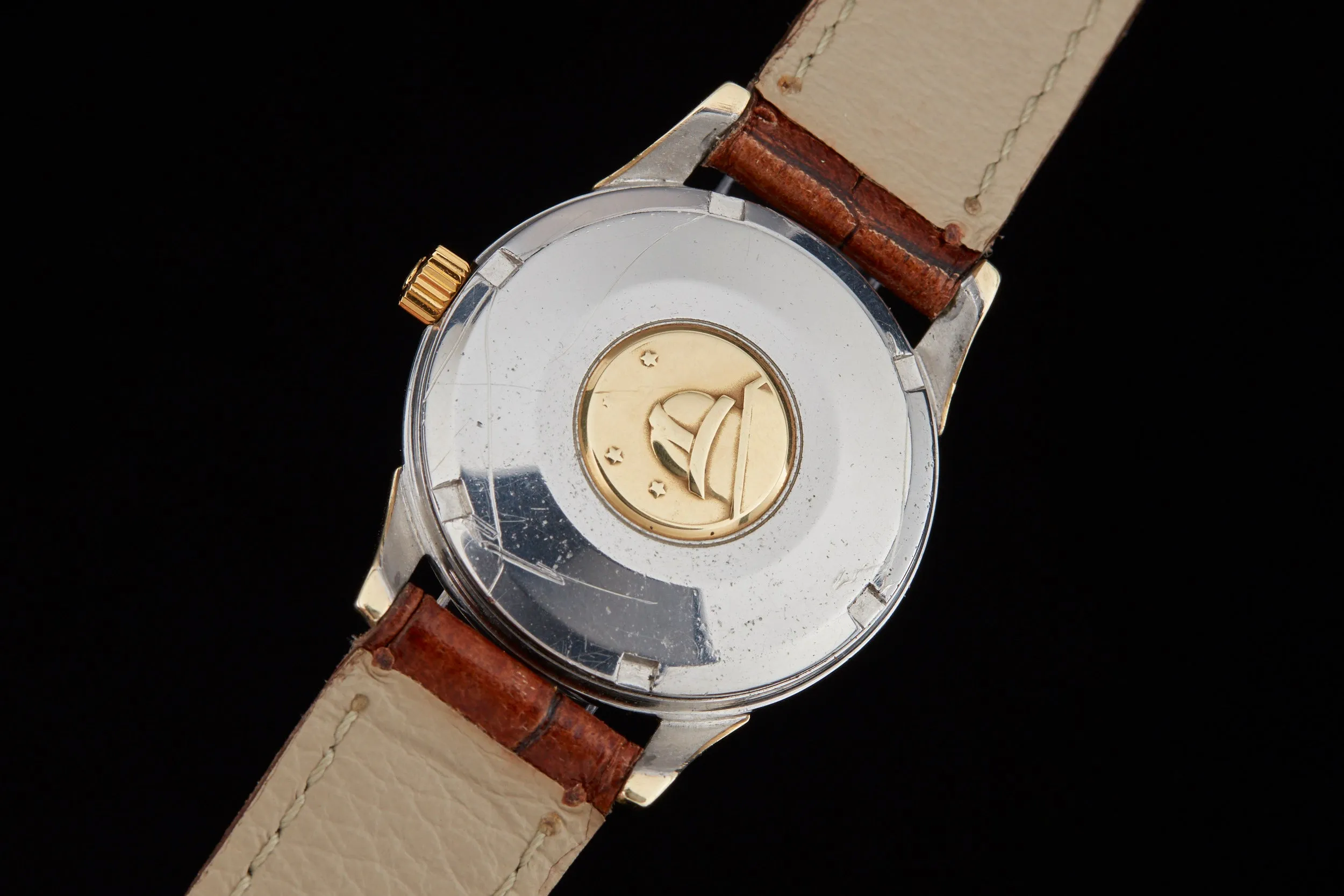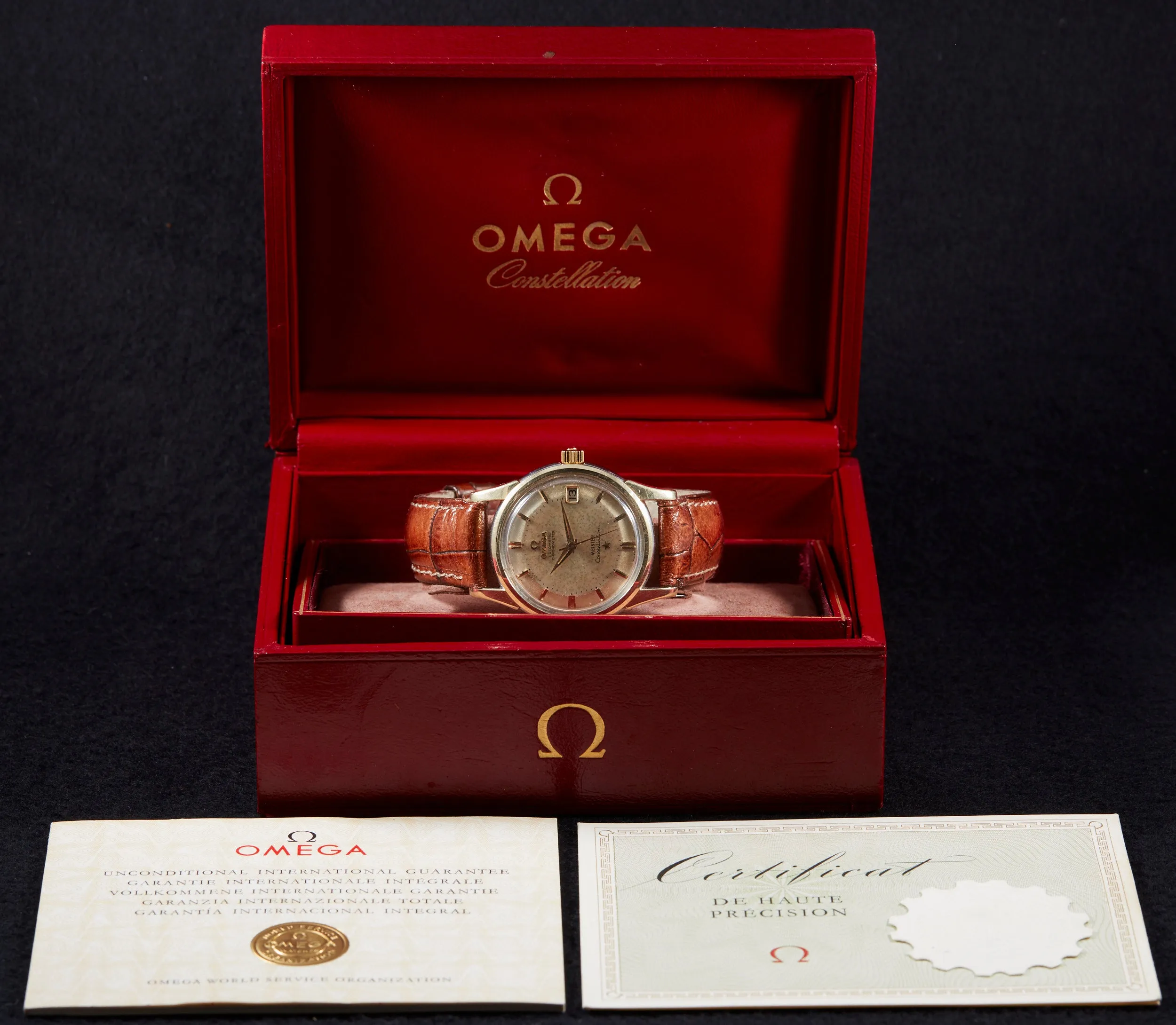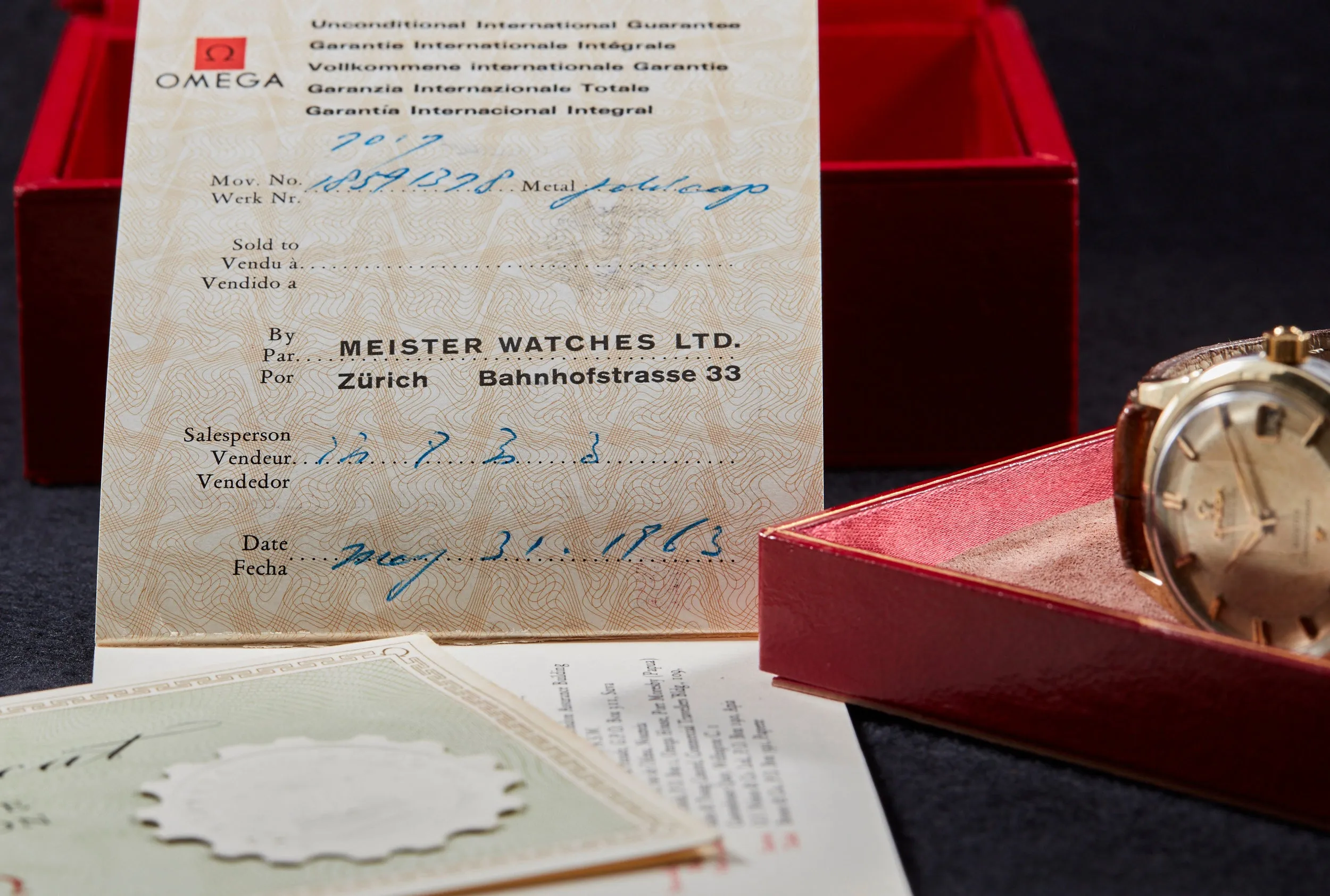While collectors might deem the to be the alpha and omega of Omega’s wristwatch offerings, the brand’s expertise did not start and end there. The brand’s catalogs throughout the years have been filled with time-only watches whose simplistic appearances belie the technical expertise that it took to make them. The Constellation is, by far, the greatest of these.
In 1948, Omega had marked its centennial with the Centenary, the brand’s first automatic chronometer. The manufacture had come into automatic movements comparatively late, only six short years before the Centenary was released. And yet the Centenary, which was never meant for full production, was such a triumph, its movements (either the Calibre 28.10mm or the Calibre 30.10mm) so well-made, that it prompted Omega to create a whole new line of watches using the same technology.
The Constellation was, of course, the watch with which Omega followed up the Centenary. Released in 1952, it was the synthesis of Omega’s most advanced horological technologies. Each Constellation made was submitted to Geneva for chronometer trials, and received “especially good results.”
Omega offered the Constellation in several different dial and case configurations over the years, but those with the distinctive pie-pan dials—like the one featured here—remain some of the most beloved.
This particular pie-pan example is a Reference 14393/61 SC. While it might seem like a nonsensical jumble of numbers with two letters tacked on at the end, each number holds the secret to the watch’s identity. In this case, the first five digits comprise the case reference number, while the last two—or 61, in this particular Constellation—refers to the model variant. And SC denotes a case back, meant to correspond with a specific movement—“SC” for “Seconde Centre,” meaning a movement that has center seconds.
Although perhaps less sought-after than the or Speedmaster, the Constellation has an undeniable savior faire that makes it a clear choice for lovers of mid-century watch design.




